2020-07-02 - Nº 270
Editorial
Esta é a Newsletter Nº 270 que se apresenta com o mesmo formato que as anteriores. Se gostar da Newsletter partilhe-a!
Todas as Newsletters encontram-se indexadas no link.
Esta Newsletter tem os seguintes tópicos:
Faz hoje anos que nascia, em 1862, o cientista britânico William Henry Bragg. Ele foi pioneiro em física do estado sólido e foi-lhe concedido (em conjunto com o seu filho Sir Lawrence Bragg) o Prémio Nobel de Física em 1915 pelas pesquisas sobre a determinação de estruturas cristalinas. Durante a Primeira Guerra Mundial, Bragg foi encarregado de pesquisas sobre a detecção e medição de sons subaquáticos para a localização de submarinos. Ele também construiu um espectrómetro de raios-X para medir os comprimentos de onda dos raios-X.
Faz também hoje anos que nascia, em 1876, a Física nuclear canadiana Harriet Brooks. Ela foi provavelmente a primeira a observar o recuo do núcleo atómico quando partículas nucleares foram emitidas durante o decaimento radioactivo. Durante os anos de 1901-05, ela contribuiu muito para a nova ciência da radioactividade. Trabalhando com Ernest Rutherford, ela mediu a taxa na qual o rádio libertava rádon (e outros gases) no ar. Eles demonstraram que a difusão das emanações de rádio comportava-se como um gás e que esse gás tinha um peso molecular alto (acima de 100). Rutherford deu crédito ao seu trabalho ao identificar a libertação de rádon como crucial para o desenvolvimento da sua teoria da transmutação de um elemento em outro.
Faz igualmente hoje anos que nascia, em 1893, o físico germano-britânico Francis Simon. O seu trabalho em física de baixa temperatura alcançou uma baixa de 20 milionésimos de grau acima do zero absoluto. Ele evitou a vida na Alemanha de Hitler indo para Oxford. Simon trabalhou na redução de temperaturas abaixo do ponto anteriormente possível pelo efeito Joule-Thomson. O seu método era retirar calor alinhando moléculas para-magnéticas em temperaturas muito baixas e permitir que sua orientação se aleatorizasse, abstraindo mais calor do ambiente e diminuindo ainda mais a temperatura. Ele chegou mais perto do zero absoluto, embora com mais dificuldade, fazendo o mesmo com rotações nucleares.
Por fim, faz hoje anos que nascia, em 1906, o físico germano-americano Hans Bethe. Ele ajudou a moldar a física clássica na física quântica e aumentou a compreensão dos processos atómicos responsáveis pelas propriedades da matéria e das forças que governam as estruturas dos núcleos atómicos. Bethe trabalhou com relação à penetração de armaduras e à teoria das ondas de choque de um projéctil em movimento no ar. Ele estudou reacções nucleares e secções transversais de reacção. Em 1943, Robert Oppenheimer pediu a Bethe para ser o chefe da Divisão Teórica em Los Alamos no Projecto Manhattan. Ele recebeu o Prémio Nobel de Física (1967) pelo seu trabalho na produção de energia em estrelas.
Nesta semana que passou a SpaceX lançou um satélite de GPS para a Força Espacial Norte-Americana. Esta foi a 11a missão da SpaceX bem sucedida. Um foguetão Falcon 9 foi lançado no passado dia 30 do Cape Canaveral na Florida. Construído pela Lockheed Martin, este é o terceiro satélite GPS do género a ser lançado e juntar-se-á a outros dois como ele, que já estão em órbita. A SpaceX lançou um desses dois satélites num foguete Falcon 9 diferente em Dezembro de 2018 e o outro satélite foi lançado no último foguete Delta IV Medium em Agosto de 2019.
Na Newsletter desta semana apresentamos diversas noticias, artigos científicos assim como projetos de maker.
 João Alves ([email protected])
João Alves ([email protected])
O conteúdo da Newsletter encontra-se sob a licença  Creative Commons Attribution-NonCommercial-ShareAlike 4.0 International License.
Creative Commons Attribution-NonCommercial-ShareAlike 4.0 International License.
Novidades da Semana

SpaceX launches advanced GPS satellite for US Space Force, sticks rocket landing
"SpaceX successfully launched its 11th mission of the year, lofting a next-generation global positioning satellite into space for the U.S. Space Force. A shiny, white Falcon 9 rocket took to the skies today (June 30) at 4:10 p.m. EDT (2010 GMT), taking off from Space Launch Complex 40 at Cape Canaveral Air Force Station in Florida. Today’s launch is part of an ongoing effort by the Department of Defense to upgrade GPS satellites currently in space. The constellation of aging GPS satellites was launched roughly 20 years ago and technology has changed significantly in that time. The particular satellite launched today will replace one of the oldest ones in orbit. Built by Lockheed Martin, this is the third GPS satellite of its kind to launch and will join two others just like it that are already in orbit." [...]
Outras Notícias

Samsung Electronics Debuts Industry-Leading 8TB Consumer SSD, the 870 QVO
"Samsung Electronics today introduced its second-generation quad-level cell (QLC) flash drive, the 870 QVO SATA SSD, that is setting a new standard for high-capacity consumer storage. Featuring an industry-leading capacity of up to eight terabytes (TB),1 the new SSD delivers an uncompromising mix of speed, storage capacity and reliability for mainstream and professional PC users. In the past, consumers have had to choose between SSDs – which provide superior performance – and HDDs, which traditionally offer greater capacity. Samsung’s 870 QVO SSD, however, is able to reliably offer the best of both worlds, making it an optimal choice for mainstream PC users who prioritize performance and value, as well as for professional users who require high levels of capacity. “Following the launch of Samsung’s first consumer QLC drive – the 860 QVO – in 2018, we are releasing our second-generation QVO SSD which offers doubled capacity of 8TB as well as enhanced performance and reliability,” said Dr. Mike Mang, vice president of the Memory Brand Product Biz Team at Samsung Electronics. “The new 870 QVO will allow more consumers to enjoy the performance benefits of an SSD at HDD-like capacities.” The 870 QVO offers best-in-class sequential read and write speeds of up to 560 MB/s and 530 MB/s respectively,2 with the drive’s Intelligent TurboWrite technology allowing it to maintain peak performance levels using a large variable SLC buffer.3 The 870 QVO also delivers a 13% improvement in random read speed4 compared to the 860 QVO, making it ideally suited for everyday computing needs such as multitasking, gaming and web browsing." [...]

Microchip Delivers the Smallest Automotive maXTouch Controllers for Smart Surfaces and Multi-function Displays
"New touch controller family offers multi-finger thick glove and weather-proof operation in a turn-key solution for easy integration To help enhance and ease today’s driving experience, automotive manufacturers are implementing additional touch displays beyond the center infotainment display (CID). Supporting the application of these secondary displays with advanced features, Microchip Technology Inc. (Nasdaq: MCHP) today announced the extension of its market-leading maXTouch® portfolio with the new MXT288UD touch controller family, the industry’s smallest automotive grade packaged touch screen controllers. The MXT288UD-AM and the MXT144UD-AM devices offer low power mode, weatherproof operation and glove touch detection in multi-function displays, touch pad and smart surfaces for vehicles, motorcycles, e-bikes and car-sharing services. Secondary touch surfaces can be placed in both the interior of cars and exterior of a motor vehicle, such as handlebars, doors, electronic mirrors, control knobs, the steering wheel, between seats or in an armrest. With the MXT288UD family’s small 7x7 mm automotive grade VQFN56 package, tier one suppliers can now reduce board space by 75 percent and greatly minimize the overall Bill of Materials (BoM) for these compact applications — all while exceeding the requirements for excellent and reliable touch performance in the market. The family’s low power wait-for-touch mode consumes less than 50 µA, remaining responsive for the user, even if the display switches off to save power or to avoid disturbing the driver at night." [...]
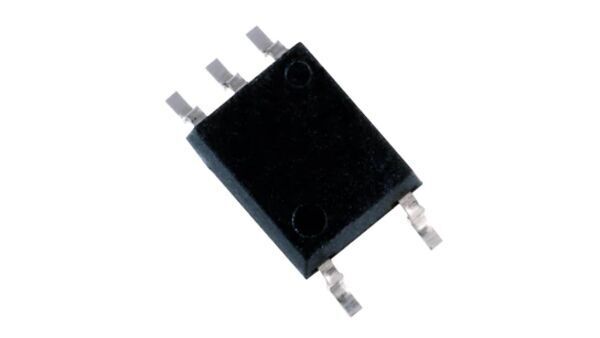
Toshiba Releases Industry’s First Photocouplers for High-Speed Communications that can Operate from 2.2V
"Toshiba Electronic Devices & Storage Corporation (“Toshiba”) has released the industry’s first[1] photocouplers for high-speed communications that can operate with a power supply as low as 2.2V. The two devices are the “TLP2312,” which delivers at typical data transfer rate of 5Mbps, and the 20Mbps “TLP2372.” Shipments start today. The new products are designed to operate at low voltage, starting at 2.2V, so as to work with the lower voltages of the peripheral circuits, even when used in such low level voltage circuits as 2.5V LVCMOS. This approach eliminates the need for a separate power supply to drive the photocouplers, reducing the component count. With a low threshold input current of 1.6mA (max), and low supply current of 0.5mA (max) in their -40℃ and +125℃ operating temperature range, the new photocouplers can be directly driven by microcontrollers, reducing power consumption. The new photocouplers are housed in 5-pin SO6 package with a maximum height of 2.3mm, securing a low profile and bringing greater freedom to component layout on printed circuit boards." [...]

STMicroelectronics Expands STM32WL Wireless Microcontroller Ecosystem with wM-Bus Stack for Smart Metering from Stackforce
"STMicroelectronics (NYSE: STM), a global semiconductor leader serving customers across the spectrum of electronics applications, and Stackforce – an ST Authorized Partner – have announced a wireless M-Bus (wM-Bus) software stack that leverages the integrated sub-GHz radio and multiple modulation schemes supported by STM32WL microcontrollers to cut bill-of-materials cost and enhance flexibility for developers of smart-metering systems. Developed by Stackforce, the wM-Bus stack complies with most of EN 13757-3/-7, covering the upper layers of the Wireless M-Bus protocol stack, as well as the lower layers (EN 13757-4) and its wM-Bus modes S, T, and C used throughout Europe in the 868MHz band. The mode N for operation at 169MHz is an option, too. In addition, it meets several other metering standards, including the most common Open Metering System (OMS) specification, as well as more specific standards like Dutch Smart Meter Requirements (DSMR) or CIG Italian Gas Committee specifications. Hakim Jaafar, Marketing Manager STM32 Wireless products at STMicroelectronics said: “Thanks to our collaboration with Stackforce, STM32WL is reaching a new level of multi-protocol compatibility. With this wireless wM-Bus stack, the STM32WL can become the key product for a wide range of smart-metering applications such as electricity, gas and water metering.“ David Rahusen, Managing Director at Stackforce, said: “We’re proud to be chosen by ST for collaboration on the next level of embedded integration." [...]

Arm Mbed OS 6.1 released
"The Mbed team are pleased to announce the release of Mbed OS 6.1, following fast on the heels of our 6.0 release. A major feature we have introduced in this release aims to improve your experience with Arm’s Platform Security Architecture when used in conjunction with Mbed OS. Platform Security Architecture, or PSA, is an Arm- led framework for securing IoT devices. Arm has been working in close collaboration with a broader ecosystem to establish both a certification scheme, involving a number of test labs and security consultants, and to provide a reference software implementation of the PSA Root of Trust, via the Trusted Firmware project. We first released support for PSA in Mbed OS back in our 5.12 release in March 2019. In a PSA system, the software stack is split between a Secure environment, where we strongly recommend the use of the reference TF-M (Trusted Firmware-M) software from the Trusted Firmware project, and the Non-secure environment, which is where Mbed OS is used." [...]

Arduino Security Primer
"At Arduino, we are hard at work to keep improving the security of our hardware and software products, and we would like to run you through how our IoT Cloud service works. The Arduino IoT Cloud‘s security is based on three key elements: The open-source library ArduinoBearSSL for implementing TLS protocol on Arduino boards; A hardware secure element (Microchip ATECCX08A) to guarantee authenticity and confidentiality during communication; A device certificate provisioning process to allow client authentication during MQTT sessions. ArduinoBearSSL In the past, it has been challenging to create a complete SSL/TLS library implementation on embedded (constrained) devices with very limited resources. An Arduino MKR WiFi 1010, for instance, only has 32KB of RAM while the standard SSL/TLS protocol implementations were designed for more powerful devices with ~256MB of RAM. As of today, a lot of embedded devices still do not properly implement the full SSL/TLS stack and fail to implement good security because they misuse or strip functionalities from the library, e.g. we found out that a lot of off-brand boards use code that does not actually validate the server’s certificate, making them an easy target for server impersonation and man-in-the-middle attacks." [...]
Ciência e Tecnologia

Photonics: From custom-built to ready-made
"An international collaboration team of University California, Santa Barbara (UCSB), California Institute of Technology (Caltech) and EPFL has developed an integrated technology that may revolutionize photonic systems. Information technology continues to progress at a rapid pace. However, the growing demands of data centers have pushed electrical input-output systems to their physical limit, which has created a bottleneck. Maintaining this growth will require a shift in how we built computers. The future is optical. Over the last decade, the field of photonics has provided a solution to the chip-to-chip bandwidth problem in the electronic world by increasing the link distance between servers with higher bandwidth, far less energy, and lower latency compared to electrical interconnects." [...]

A Metal-like Quantum Gas: A pathbreaking platform for quantum simulation
"Coherent and ultrafast laser excitation creates an exotic matter phase with spatially overlapping electronic wave-functions under nanometric control in an artificial micro-crystal of ultracold atoms. This exotic metal-like quantum gas under exquisite control and long-lived, decaying in nanoseconds, opens up a completely new regime of many-body physics for simulating ultrafast many-body electron dynamics dominated by Coulomb interactions. Electronic properties of condensed matter are often determined by an intricate competition between kinetic energy that aims to overlap and delocalize electronic wave functions across the crystal lattice, and localizing electron-electron interactions. In contrast, the gaseous phase is characterized by valence electrons tightly localized around the ionic atom cores in discrete quantum states with well-defined energies. As an exotic hybrid of both situations, one may wonder which state of matter is created when a gas of isolated atoms is suddenly excited to a state where electronic wave functions spatially overlap like in a solid? Such an exotic phase of matter, however, has so far been impossible to be created in principle." [...]
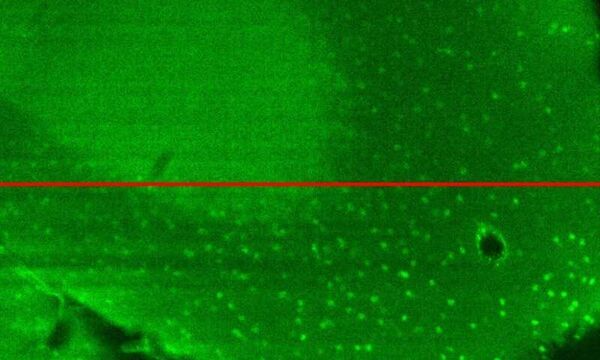
Plug-and-Play Lens Simplifies Adaptive Optics for Microscopy
"Device makes it easy for scientists to access high-quality images from deep inside tissue Researchers have developed a new plug-and-play device that can add adaptive optics correction to commercial optical microscopes. Adaptive optics can greatly improve the quality of images acquired deep into biological samples, but has, until now, been extremely complex to implement. “Improving the technology available to life scientists can further our understanding of biology, which will, in turn, lead to better drugs and therapies available to doctors,” said research team leader, Paolo Pozzi from the University of Modena and Reggio Emilia in Italy. In The Optical Society (OSA) journal Optics Letters, Pozzi and a multidisciplinary team of researchers from Delft University of Technology (TU Delft), CNR-Institute for Photonics and Nanotechnology (CNR-IFL) and University Medical Center Rotterdam describe their new adaptive lens device. They also show how it can be easily installed onto the objective lens of a commercial multiphoton microscope to improve image quality. “This approach will allow advanced optical techniques such as multiphoton microscopy to image deeper under the surface of the brain in live organisms,” said Stefano Bonora, group leader at the CNR-IFL." [...]
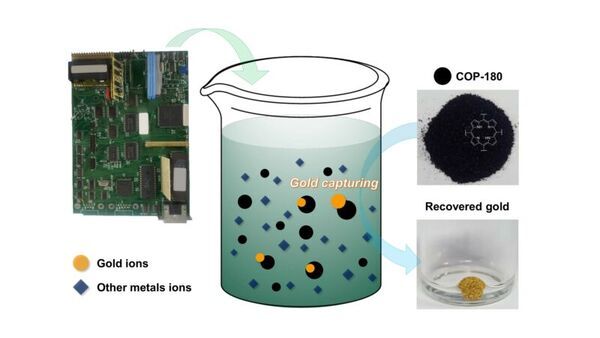
New polymer easily captures gold extracted from e-waste
"One thing holding back e-waste recycling is the actual recycling process itself. We need cheaper, safer, cleaner, or more effective methods of separating and recovering the valuable elements from electronics before we can make the whole endeavor more attractive and profitable. Some current methods use large amounts of energy to melt components down, but chemistry could provide some tempting alternatives. A new study led by Yeongran Hong of the Korea Advanced Institute of Science and Technology involves a chemical with an impressive affinity for gold. Subject some circuit boards to an acid treatment to release its materials and this stuff will gather up all the dissolved gold. And after it lets go of that gold, it’s ready to be used again." [...]

Researchers create a mechanically-tunable graphene quantum dot
"The ability to precisely manipulate individual charge carriers is a cornerstone for single-electron transistors and for electronic devices of the future, including solid-state quantum bits (qubits). Quantum dots (QDs) are at the heart of these devices. In a recent Nano Letters paper, researchers at Delft University of Technology (TU Delft) present the first mechanically-tunable monolayer graphene QD whose electronic properties can be modified by in-plane nanometer displacements. In order to access both the electrical and mechanical information from the sample, the researchers used a platform called the ‘mechanically controlled break junction’ to measure the electromechanical properties of their device during three-point bending. The sample consists of a van der Waals heterostructure made by stacking several 2D material flakes on top of a flexible substrate: a graphite back gate to electrostatically control the current through the device, a hexagonal boron nitride dielectric layer and a monolayer graphene conducting channel. Breaking a bowtie The results of the room-temperature measurements during bending demonstrate that the graphene, patterned into a nanobowtie shape with a constriction width of 160 nm, eventually breaks (zero current) but can also be remade (microampere currents) due to sliding and overlapping of the graphene edges." [...]

Chemists achieve breakthrough in the synthesis of graphene nanoribbons
"Graphene Nanoribbons might soon be much easier to produce. An international research team led by Martin Luther University Halle-Wittenberg (MLU), the University of Tennessee and Oak Ridge National Laboratory in the U.S. has succeeded in producing this versatile material for the first time directly on the surface of semiconductors. Until now, this was only possible on metal surfaces. The new approach also enables scientists to customise the properties of the nanoribbons. Storage technology is one of the potential applications of the material. The research team reports on its results in the current issue of "Science"." [...]
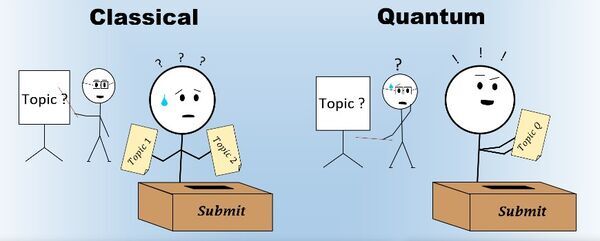
Quantum physics provides a way to hide ignorance
"Students can hide their ignorance and answer questions correctly in an exam without their lack of knowledge being detected by teachers – but only in the quantum world. University of Queensland researchers have successfully verified a counterintuitive idea from quantum theory – that ignorance of the whole does not necessarily imply ignorance of the parts – in the lab. UQ physicist Dr Jacqui Romero from the ARC Centre of Excellence for Engineered Quantum Systems (EQUS) said the team’s findings would be important when evaluating security in quantum encryption. “What's also really nice is that we provide an accessible, real-world interpretation of a statement that comes from pure probability theory,” Dr Romero said. According to classical intuition, ignorance can be traced to a source – if a student’s knowledge of a book is incomplete, a teacher can design a test to probe which parts of the book are unknown to the student. UQ PhD candidate and EQUS experimental physicist Michael Kewming said that this wasn’t always the case in the quantum world." [...]
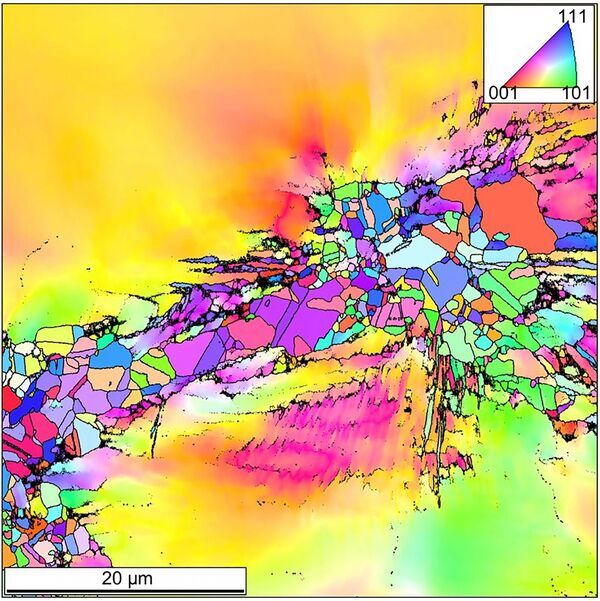
Lack of Damage After Secondary Impacts Surprises Researchers
"When a material is subjected to an extreme load in the form of a shock or blast wave, damage often forms internally through a process called spall fracture. Since these types of intense events are rarely isolated, research is needed to know how damaged materials respond to subsequent shock waves — a piece of armor isn’t much use if it disintegrates after one impact. To the surprise of researchers, recent experimentation on spall fracture in metals found that, in certain cases, there was an almost complete lack of damage with only a thin band of altered microstructure observed. Usually, under these sorts of conditions, the material would contain hundreds of small voids and cracks. In an article for the Journal of Applied Physics, published by AIP Publishing, researchers from Los Alamos National Laboratory narrowed down exactly why the expected damage was missing. “Conflicting hypotheses were suggested for the lack of damage." [...]

Team develops eco-friendly, flame-retardant carbon plastic ideal for recycling
"A flame-retardant carbon-fiber-reinforced composite material has been developed. Korea Institute of Science and Technology (KIST) announced that a research team from its Institute of Advanced Composite Materials, headed by Dr. Yong chae Jung used plant-originated tannic acid to develop a flame-retardant carbon fiber-reinforced plastic (CFRP), and also presented a method for its eco-friendly recycling. CFRP, a composite material that contains carbon fiber, which is about four times lighter than steel yet 10 times stronger, is widely used in the aerospace, automotive, shipbuilding, and sports equipment industries. Structurally, CFRP is made up of carbon fiber and epoxy resin, which serve functions in this composite material similar to the respective roles that reinforcing rods and cement play in concrete structures. To achieve mechanical rigidity, the binding of carbon fiber and epoxy resin in CFRP must be strong. Moreover, CFRP must be fire-safe, as it is used for purposes closely related to everyday life, e.g., use as a construction material." [...]

How to make copper mines emission free
"Will copper spur the sustainable energy transition? Share A world first study by the University of Sydney's Warren Centre for Advanced Engineering, Zero Emission Copper Mine of the Future, lays out how Australian copper mining can be cleaner and smarter using emerging technologies. The Zero Emission Copper Mine of the Future report by the University of Sydney’s Warren Centre for Advanced Engineering sets out how Australian copper mining can become emission free over the next 30 years through the use of emerging technologies. This ‘world first’ roadmap, commissioned by the International Copper Association Australia (ICAA), identifies five key target areas for technological innovation to reduce and ultimately eliminate mining emissions: exploration, movement of materials, ventilation, processing, and water use. The range of technologies copper supports is vast: autonomous drones and robot machinery, next generation sensors, Mixed Reality (immersive technology), wearable tech, in-situ ore recovery, novel leaching processes and on demand ventilation are just some examples. Achieving cutting edge innovation will also depend on collaboration across five strategic levers: policy and programs, industry networks, capital enablers, future knowledge and an open mindset." [...]
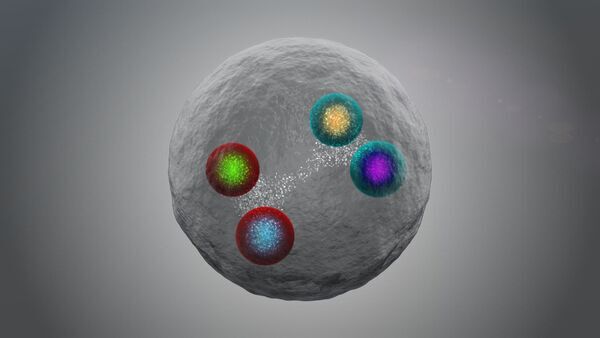
LHCb discovers a new type of tetraquark at CERN
"The LHCb collaboration has observed an exotic particle made up of four charm quarks for the first time. The LHCb collaboration has observed a type of four-quark particle never seen before. The discovery, presented at a recent seminar at CERN and described in a paper posted today on the arXiv preprint server, is likely to be the first of a previously undiscovered class of particles. The finding will help physicists better understand the complex ways in which quarks bind themselves together into composite particles such as the ubiquitous protons and neutrons that are found inside atomic nuclei. Quarks typically combine together in groups of twos and threes to form particles called hadrons. For decades, however, theorists have predicted the existence of four-quark and five-quark hadrons, which are sometimes described as tetraquarks and pentaquarks, and in recent years experiments including the LHCb have confirmed the existence of several of these exotic hadrons." [...]

Quantum Satellite Links Extend More Than 1,000 Kilometers
"A space-based, virtually unhackable quantum Internet may be one step closer to reality due to satellite experiments that linked ground stations more than 1,000 kilometers apart, a new study finds. Quantum physics makes a strange effect known as entanglement possible. Essentially, two or more particles such as photons that get linked or "entangled" can influence each other simultaneously no matter how far apart they are. Entanglement is an essential factor in the operations of quantum computers, the networks that would connect them, and the most sophisticated kinds of quantum cryptography, a theoretically unhackable means of securing information exchange. The maximum distance over which researchers have thus far generated quantum cryptography links between stations on Earth is roughly 144 kilometers. In principle, satellites could serve as relays between ground stations to greatly boost the lengths to which quantum links can extend." [...]

EPFL lab develops method for designing lower-power circuits
"An EPFL lab, has come up with a new type of logic diagram and related optimization methods, that can be used to design computer chips with a nearly 20% gain in energy efficiency, speed or size. The lab has just entered into a license agreement with Synopsys, a global leader in electronic design automation and chip fabrication software. EPFL’s Integrated Systems Laboratory (LSI) has developed a method for reducing the power requirement of computer chips by mapping out their logic flows in an entirely new way. By using a different set of logic functions for the gates on the billions of transistors on electronic circuits, this system shortens the circuits’ calculation steps. That means chip designers can make their chips either smaller, faster or more energy efficient. Industry leader Synopsys has just acquired the rights to use the technology through a non-exclusive license agreement." [...]
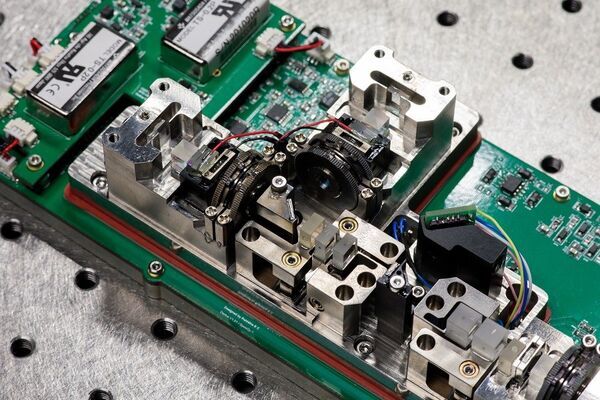
Quantum Entanglement Demonstrated Aboard Orbiting CubeSat
"Advance poised to enable cost-effective space-based global quantum network for secure communications and more In a critical step toward creating a global quantum communications network, researchers have generated and detected quantum entanglement onboard a CubeSat nanosatellite weighing less than 2.6 kilograms and orbiting the Earth. “In the future, our system could be part of a global quantum network transmitting quantum signals to receivers on Earth or on other spacecraft,” said lead author Aitor Villar from the Centre for Quantum Technologies at the National University of Singapore. “These signals could be used to implement any type of quantum communications application, from quantum key distribution for extremely secure data transmission to quantum teleportation, where information is transferred by replicating the state of a quantum system from a distance.” In Optica, The Optical Society's (OSA) journal for high impact research, Villar and an international group of researchers demonstrate that their miniaturized source of quantum entanglement can operate successfully in space aboard a low-resource, cost-effective CubeSat that is smaller than a shoebox. CubeSats are a standard type of nanosatellite made of multiples of 10 cm × 10 cm × 10 cm cubic units. “Progress toward a space-based global quantum network is happening at a fast pace,” said Villar. “We hope that our work inspires the next wave of space-based quantum technology missions and that new applications and technologies can benefit from our experimental findings.” Miniaturizing quantum entanglement The quantum mechanical phenomenon known as entanglement is essential to many quantum communications applications." [...]

Chemistry paves the way for improved electronic materials
"Indium nitride is a promising material for use in electronics, but difficult to manufacture. Scientists at LiU have developed a new molecule that can be used to create high-quality indium nitride, making it possible to use it in, for example, high-frequency electronics. The bandwidth we currently use for wireless data transfer will soon be full. If we are to continue transmitting ever-increasing amounts of data, the available bandwidth must be increased by bringing further frequencies into use. Indium nitride may be part of the solution. “Since electrons move through indium nitride extremely easily, it is possible to send electrons backwards and forwards through the material at very high speeds, and create signals with extremely high frequencies." [...]
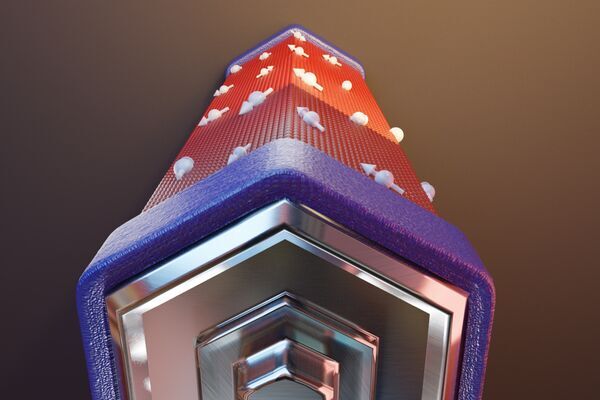
CnrNano's team realizes the first phase battery for quantum technologies
"The first quantum phase battery has been realized by the groups of Francesco Giazotto (CNRNano) and Sebastian Bergeret (CFM, CSIC-UPV/EHU, DIPC, Donostia / San Sebastian), with the collaboration of Salerno University. The device consist of an indium arsenide (InAs) nanowire in contact with aluminum superconducting leads and is a key element for quantum technologies based on phase coherence. The work has been published in the prestigious journal Nature Nanotechnology(2020). https://doi.org/10.1038/s41565-020-0712-7 Batteries belongs to everyday life. A classical battery, the Volta´s pile, converts chemical energy into a voltage, which can power electronic circuits. In many quantum technologies, circuits or devices are based on superconducting materials." [...]
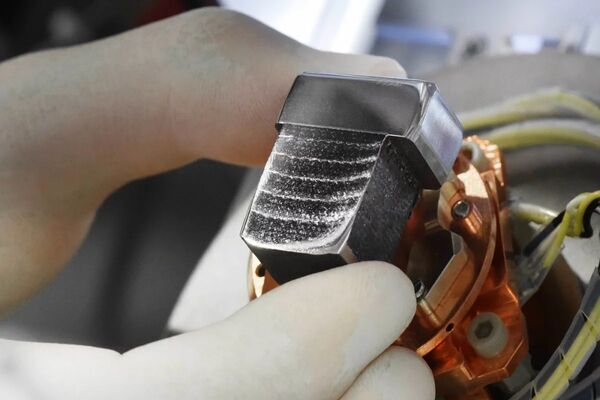
Strong and ductile Damascus steels by additive manufacturing
"Max Planck scientists use the intrinsic heat treatment of additive manufacturing to locally control the microstructure. Their recent findings have now been published in the latest issue of ‘Nature’. Dr. Philipp Kürnsteiner, Prof. Eric Jägle and their team at the Max-Planck-Institut für Eisenforschung (MPIE) designed, together with colleagues from the Fraunhofer Institute for Laser Technology, a new strong and ductile steel, imitating the layered structure of Damascus steels. They were able to exploit the intrinsic heat treatment during additive manufacturing, thus saving time and costs of the usual post-process heat treatment. The scientists recently published their findings in ‘Nature’. “We designed a new iron, nickel and titanium based steel that is tailor-made for additive manufacturing processes." [...]
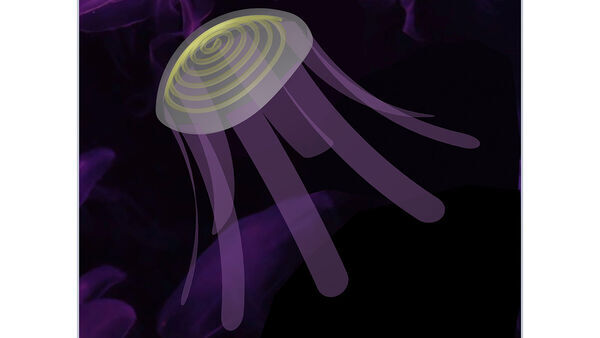
Jellyfish-Inspired Soft Robots Can Outswim Their Natural Counterparts
"Engineering researchers at North Carolina State University and Temple University have developed soft robots inspired by jellyfish that can outswim their real-life counterparts. More practically, the new jellyfish-bots highlight a technique that uses pre-stressed polymers to make soft robots more powerful. “Our previous work focused on making soft robots that were inspired by cheetahs – and while the robots were very fast, they still had a stiff inner spine,” says Jie Yin, an assistant professor of mechanical and aerospace engineering at NC State and corresponding author of a paper on the new work. “We wanted to make a completely soft robot, without an inner spine, that still utilized that concept of switching between two stable states in order to make the soft robot move more powerfully – and more quickly. And one of the animals we were inspired by was the jellyfish.” The researchers created their new soft robots from two bonded layers of the same elastic polymer. One layer of polymer was pre-stressed, or stretched." [...]
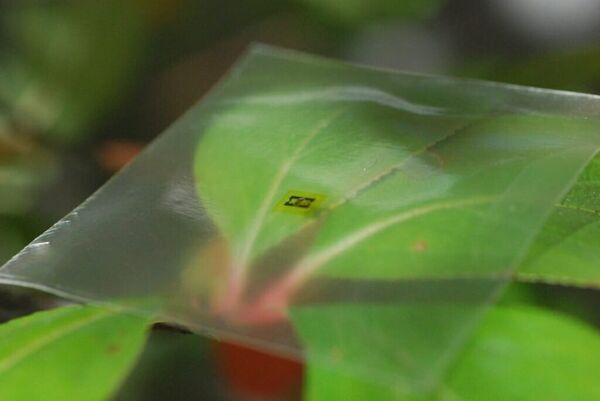
Critical communications component made on a flexible wooden film
"In the not-too-distant future, flexible electronics will open the door to new products like foldable phones, tablets that can be rolled, paper-thin displays and wearable sensors that monitor health data. Developing these new bendy products, however, means using materials like new plastics and thin films to replace the rigid circuit boards and bulky electronic components that currently occupy the interiors of cell phones and other gadgets. New research by a University of Wisconsin–Madison engineer leverages a surprising and inexpensive substance — wood — to make the flexible microwave circuits that power modern communications. In a paper published today in the journal Nature Communications, Zhenqiang “Jack” Ma, a UW–Madison professor of electrical and computer engineering, explains how he and his collaborators constructed a functional microwave amplifier circuit on a substrate of cellulose nanofibril paper, a wood product. Microwave components, which are used in wireless communication, have proved difficult to produce in a flexible form and are typically constructed on integrated semiconductor chips or printed on circuit boards. But flexible versions, including thin-film transistors and other components Ma has been creating for more than a decade, could have widespread applications in wearable devices, drones and as part of large-area microwave arrays used in 5G wireless networks and advanced communication systems." [...]

Tabletop quantum experiment could detect gravitational waves
"Tiny diamond crystals could be used as an incredibly sensitive and small gravitational detector capable of measuring gravitational waves, suggests new UCL-led research. Predicted by Einstein’s general theory of relativity, gravitational waves are ripples in space–time generated by certain movements of massive objects. They are important to study because they allow us to detect events in the universe that would otherwise leave little or no observable light, like black hole collisions. In 2015, the Laser Interferometer Gravitational-Wave Observatory (LIGO) and the Virgo collaborations made the first direct observation of gravitational waves. The waves were emitted from a 1.3 billion-year-old collision between two supermassive black holes and were detected using 4 km long optical interferometers as the event caused ripples in the Earth's space-time. Researchers from UCL, University of Groningen, and University of Warwick propose a detector based on quantum technology that is 4000 times smaller than the detectors currently in use and could detect mid-frequency gravitational waves." [...]

Quantum fluctuations can jiggle objects on the human scale
"Study shows LIGO’s 40-kilogram mirrors can move in response to tiny quantum effects, revealing the “spooky popcorn of the universe.” The universe, as seen through the lens of quantum mechanics, is a noisy, crackling space where particles blink constantly in and out of existence, creating a background of quantum noise whose effects are normally far too subtle to detect in everyday objects. Now for the first time, a team led by researchers at MIT LIGO Laboratory has measured the effects of quantum fluctuations on objects at the human scale. In a paper published today in Nature, the researchers report observing that quantum fluctuations, tiny as they may be, can nonetheless “kick” an object as large as the 40-kilogram mirrors of the U.S. National Science Foundation’s Laser Interferometer Gravitational-wave Observatory (LIGO), causing them to move by a tiny degree, which the team was able to measure. It turns out the quantum noise in LIGO’s detectors is enough to move the large mirrors by 10-20 meters — a displacement that was predicted by quantum mechanics for an object of this size, but that had never before been measured. “A hydrogen atom is 10-10 meters, so this displacement of the mirrors is to a hydrogen atom what a hydrogen atom is to us — and we measured that,” says Lee McCuller, a research scientist at MIT’s Kavli Institute for Astrophysics and Space Research. The researchers used a special instrument that they designed, called a quantum squeezer, to “manipulate the detector’s quantum noise and reduce its kicks to the mirrors, in a way that could ultimately improve LIGO’s sensitivity in detecting gravitational waves,” explains Haocun Yu, a physics graduate student at MIT." [...]

Shrimp shells to produce electrodes for large storage batteries
"Spanish researchers at MIT have developed a system to produce electrodes for vanadium flow batteries, used in renewable energy storage. The electrodes are made from chitin, a polysaccharide found in the exoskeleton of crustaceans and insects. The advantage of this component is that it contains nitrogen in addition to carbon, which is then incorporated into the structure of the electron during the production process, improving electrode’s performance. A project by Spanish researchers, and other collaborators, at theMassachusetts Institute of Technology(MIT) suggests the use ofchitinfromshrimp shellsto produce electrodes for vanadium flow batteries. The results of the work have recently been published in theACS Sustainable Chemistry & Engineeringjournal. The chemical engineerFrancisco Martín-Martínez, one of the authors, has explained to SINC that “vanadium redox flow batteries, unlike lithium batteries used in the automotive industry, do not provide a high energy density, but do provide a large volume of energy storage at low cost, which makes them ideal for storingenergy from renewable sourcessuch as solar and wind power, whose energy production is intermittent.” Martín-Martínez, an expert in the development ofbio-inspired materials, points out that in order to facilitate theflow of electronsfrom one side of the battery to the other, carbon electrodes are usually used: “We have produced these electrodes from chitin, a material from shrimp shells." [...]
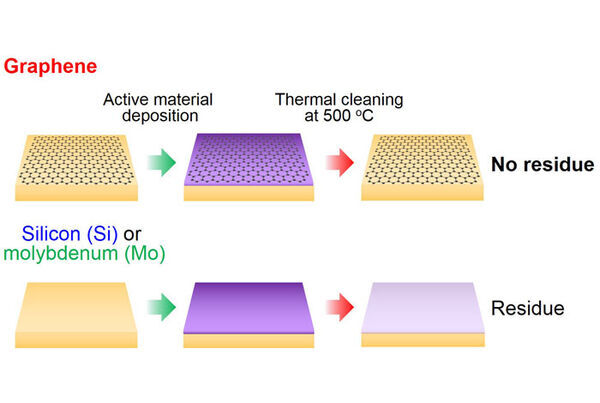
Building better electron sources with graphene
"Photocathodes that produce electron beams for electron microscopes and advanced accelerators can be refreshed and rebuilt repeatedly without opening the devices that rely on them, provided the electron emitting materials are deposited on single-atom-thick layers of carbon known as graphene, according to a new study published in the journal Applied Physics Letters. “The machines that rely on these electron emitters typically operate under high vacuum,” said Los Alamos National Laboratory physicist Hisato Yamaguchi. “By choosing graphene over materials like silicon or molybdenum, which tend to degrade during use, we can clean the substrate and redeposit electron-emitting materials without opening the vacuum. This can dramatically reduce downtime and labor involved in replacing photocathodes.” The researchers studied photocathodes made of cesium potassium antimonide, which efficiently emit electrons when illuminated with high-power, green laser light. The photocathode efficiency falls with use, and the photocathodes must be either replaced or renewed with the electron-emitting material baked off and replaced in situ. When the researchers renewed photocathodes on substrates of silicon or molybdenum, which are common materials for such devices, the photocathode performance degraded with each cycle." [...]
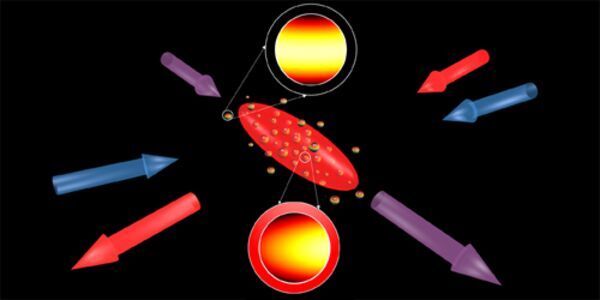
USTC Obtain High-level Control of Spin Qubit Lifetime Based on Silicon Quantum Dots
"By tuning the direction of the external magnetic field with respect to the crystallographic axis of the silicon wafer, an improvement of spin lifetime (relaxation time) by over two orders of magnitude was reported in silicon quantum dots (QDs). This study, published in Physics Review Letter on June 23, was carried out by a team led by academician GUO Guangcan from University of Science and Technology of China (USTC) of the Chinese Academy of Sciences (CAS). It was selected as Editors’ Suggestion, and was chosen for “Featured in Physics” and reported online entitled by “Cooling a Spin Relaxation Hot-Spot”. Spin qubits based on silicon QDs has been a core issue in the development of large scale quantum computation due to its long coherence time and the compatibility with modern semiconductor technology. The relaxation time and dephasing time of spin qubits developed in Si Metal-Oxide-Semiconductor (MOS) and Si/SiGe heterostructure have surpassed hundreds of milliseconds and hundreds of microseconds, respectively, resulting in a single-qubit control fidelity over 99.9% and a two-qubit gate fidelity over 98%. With the success in college, labs and companies from the industry start to be involved in this field, such as Intel, CEA-Leti, IMEC and etc." [...]
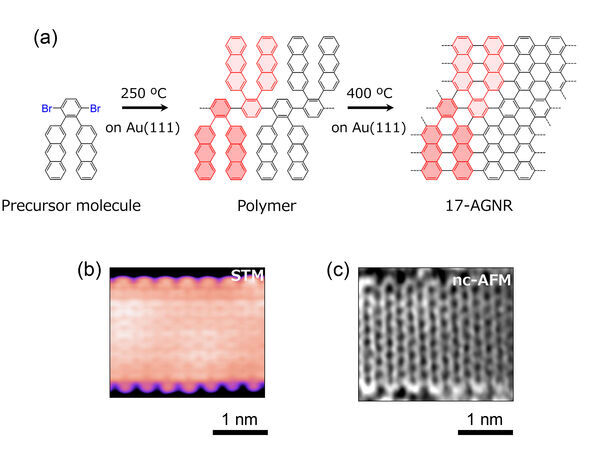
World's widest graphene nanoribbon promises the next generation of miniaturized electronics
"World's widest graphene nanoribbon promises the next generation of miniaturized electronics Materials Science 2020/07/01 With literally the thickness of one carbon atom and electrical properties that can surpass those of standard semiconductor technologies, graphene nanoribbons promise a new generation of miniaturized electronic devices. The theory, however, remains far ahead of reality, with current graphene nanoribbons falling short of their potential. A new collaborative study seen in Communications Materials by a project of CREST, JST Japan including Nara Institute of Science and Technology (NAIST), Fujitsu Laboratories Ltd. and Fujitsu Ltd., and the University of Tokyo reports the first ever 17-carbon wide graphene nanoribbon and confirms it has the smallest bandgap seen to date among known graphene nanoribbons prepared by a bottom-up manner. Large-scale integrated circuits (LSIs) that use silicon semiconductors are used in a wide range of electronic devices, anywhere from computers to smartphones. They are actually supporting our lives and almost everything else these days. However, although LSIs have improved device performance by reducing the size of the devices, LSI miniaturization is approaching its limit." [...]

CSAIL robot disinfects The Greater Boston Food Bank to fight Covid-19
"For every droplet dispersed into the air that we can’t see, touch, or feel, the ominous threat of spreading Covid-19 persists. It’s become increasingly critical to keep these heavy droplets from lingering - especially on surfaces, which are welcoming and generous hosts. Thankfully, our chemical cleaning products can do wonders to take them down, but in larger settings it can be expensive, dangerous, and time-consuming. Across the globe there are thousands of warehouses, grocery stores, schools and other spaces where cleaning workers are at risk. With that in mind, a team from MIT’s Computer Science and Artificial Intelligence Laboratory (CSAIL), in collaboration with Ava Robotics and the Greater Boston Food Bank (GBFB), designed a new robotic system that powerfully disinfects surfaces and neutralizes aerosolized forms of the coronavirus. The approach uses a custom UVC light fixture designed at CSAIL that is integrated with Ava Robotics’ mobile robot base." [...]

Wearable-tech glove translates sign language into speech in real time
"The device is inexpensive, flexible and highly durable, UCLA bioengineers say UCLA bioengineers have designed a glove-like device that can translate American Sign Language into English speech in real time through a smartphone app. Their research is published in the journal Nature Electronics. “Our hope is that this opens up an easy way for people who use sign language to communicate directly with non-signers without needing someone else to translate for them,” said Jun Chen, an assistant professor of bioengineering at the UCLA Samueli School of Engineering and the principal investigator on the research. “In addition, we hope it can help more people learn sign language themselves.” The system includes a pair of gloves with thin, stretchable sensors that run the length of each of the five fingers. These sensors, made from electrically conducting yarns, pick up hand motions and finger placements that stand for individual letters, numbers, words and phrases. The device then turns the finger movements into electrical signals, which are sent to a dollar-coin–sized circuit board worn on the wrist." [...]
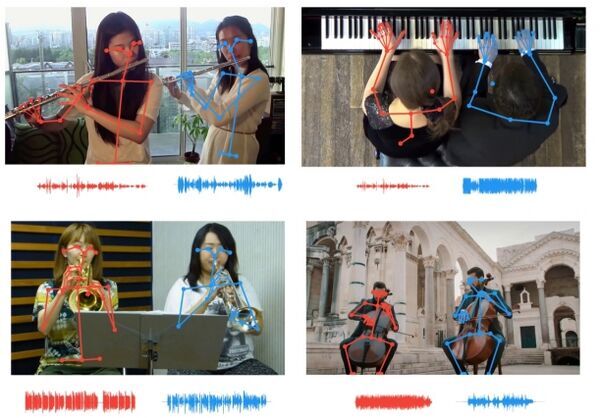
Identifying a melody by studying a musician’s body language
"Music gesture artificial intelligence tool developed at the MIT-IBM Watson AI Lab uses body movements to isolate the sounds of individual instruments. We listen to music with our ears, but also our eyes, watching with appreciation as the pianist’s fingers fly over the keys and the violinist’s bow rocks across the ridge of strings. When the ear fails to tell two instruments apart, the eye often pitches in by matching each musician’s movements to the beat of each part. A new artificial intelligence tool developed by the MIT-IBM Watson AI Lab leverages the virtual eyes and ears of a computer to separate similar sounds that are tricky even for humans to differentiate. The tool improves on earlier iterations by matching the movements of individual musicians, via their skeletal keypoints, to the tempo of individual parts, allowing listeners to isolate a single flute or violin among multiple flutes or violins. Potential applications for the work range from sound mixing, and turning up the volume of an instrument in a recording, to reducing the confusion that leads people to talk over one another on a video-conference calls." [...]

Computational model decodes speech by predicting it
"UNIGE scientists have fine-tuned a neuro-computer model, combining neuronal oscillations and predictive coding, which helps explain how the brain identifies syllables in natural speech. The brain analyses spoken language by recognising syllables. Scientists from the University of Geneva (UNIGE) and the Evolving Language National Centre for Competence in Research (NCCR) have designed a computational model that reproduces the complex mechanism employed by the central nervous system to perform this operation. The model, which brings together two independent theoretical frameworks, uses the equivalent of neuronal oscillations produced by brain activity to process the continuous sound flow of connected speech. The model functions according to a theory known as predictive coding, whereby the brain optimizes perception by constantly trying to predict the sensory signals based on candidate hypotheses (syllables in this model). The resulting model, described in the journal Nature Communications, has helped the live recognition of thousands of syllables contained in hundreds of sentences spoken in natural language." [...]
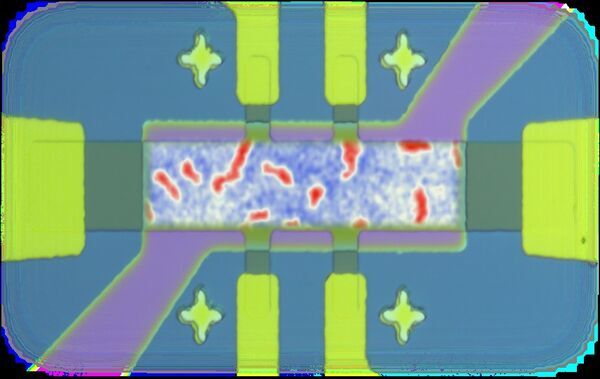
Study reveals new magnetic process that can lead to more energy-efficient memory in computers and other devices
"Researchers at Virginia Commonwealth University and the University of California, Los Angeles have made an important advance that could lead to more energy efficient magnetic memory storage components for computers and other devices. Magnets are widely used for computer memory because their “up” or “down” polarity — the magnetic state — can be “flipped” to write or encode data and store information. Magnetic memory is nonvolatile, so information can be stored on devices without refreshing. However, magnetic memory also requires a lot of energy. A recently discovered magnetic state called the skyrmion, which is neither “up” nor “down” but flower-shaped, offers a solution. Manipulating the skyrmion state allows for much more efficient, robust data storage for conventional computers and wireless smart devices." [...]
Projetos Maker
Diversos Projetos interessantes.
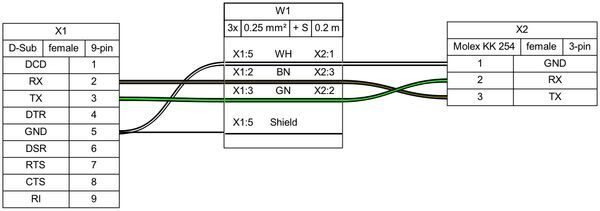
WireViz
"WireViz is a tool for easily documenting cables, wiring harnesses and connector pinouts. It takes plain text, YAML-formatted files as input and produces beautiful graphical output (SVG, PNG, ...) thanks to GraphViz. It handles automatic BOM (Bill of Materials) creation and has a lot of extra features. " [...]

Plant'm
"As most do, I love having plants around the house. Unfortunately, they almost always end up dying within a couple of weeks. So when at the end of my first year as a student at MCT at Howest I was tasked with creating a project that would show everything I learned so far, I wanted to make something that would reduce the number of dead plants around the house. And so Plant'm was born. I looked back to my previous plants and tried to think of the various reasons they didn't survive. Mostly this was because I forgot to water them, watered them too much, or never let them see the light of day." [...]
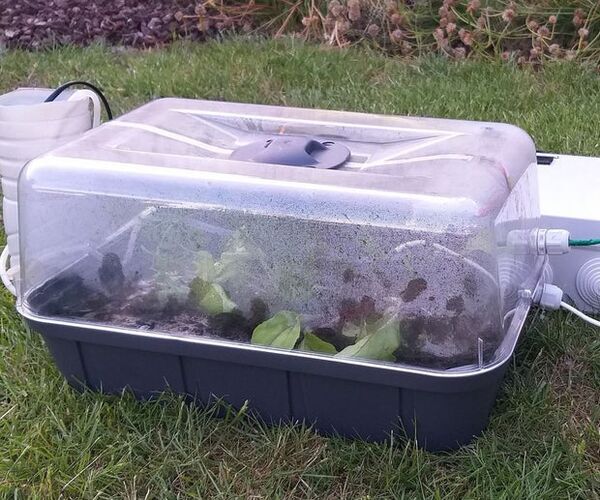
Automated Plant Pot - Little Garden
"Looking around for idea's, I decided to make something usefull for my mother who loves growing plants and began working on an automated plant pot. The main tasks for this automated plant pot, Little Garden, are to: Measure the Temperature Light intensity Humidity Soil moisture Save the measurements to a database Improve the conditions for the plant growth if a certain value is too low Let the device be monitored and managed through a website Not every step has to be followed to the mark. A lot of what happens can be your personal preference or be improved upon. This build was made in a way so parts could be recuperated afterwards, so you might want to approach your itteration differently to make it more permanent" [...]
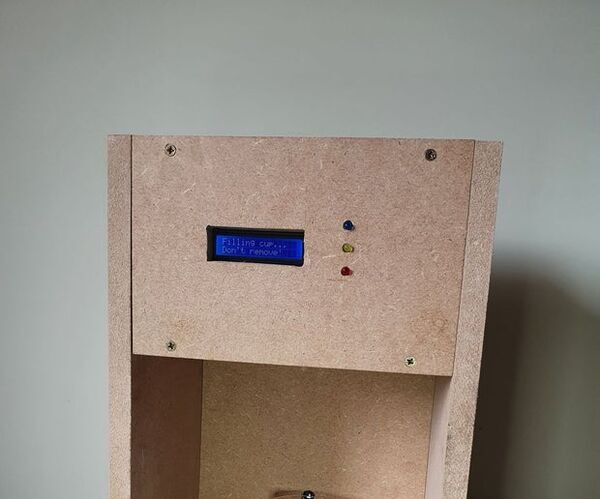
Contactless Water Fountain
"I was looking for a project that would check all the requirements set by my teachers and at the same time be fun for me to make. When looking for a subject I couldn't help but feel inspired by Covid-19 (This was right before it went to a world wide outbreak.) I chose for a contact less water fountain/dispenser, as it would offer for a way of drinking water without touching some buttons before water would come out. This project uses a distance sensor to detect if a cup or glass has been placed under the water output, the fountain will then proceed to output water for 60 seconds (100ml / minute). This is to make it more consistent because detecting if the glass has been pulled away proved to be too difficult/slow of a task which is why a timer was put in place. After your glass has been filled with 100ml of water you can wait for 5 seconds and if the glass is still in front of the distance sensor it will proceed to fill another time (this means there is also a timeout of 5 seconds between filling two different items)." [...]
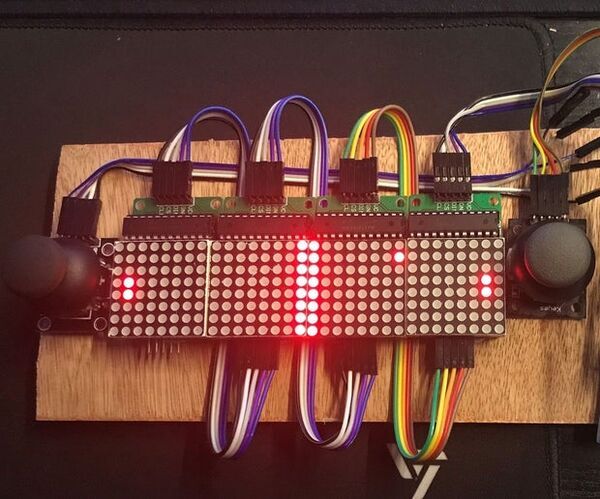
Pong Tennis With LED Matrix, Arduino and Joysticks
"This project is intended for beginners and experienced tinkerers alike. At a basic level it can be done with a breadboard, jumper wires and stuck to to a piece of scrap material (I used wood) with Blu-Tack and no soldering. However on a more advanced level it can be soldered to perf board or a custom PCB. As this was a lockdown project I didn't have access to any many tools or materials hence why its stuck down to a piece of scrap wood that is slightly too small with Blu-Tack, however despite this it is a fun project that comes together quickly and is made up of commonly available parts that can be found cheaply online. To make the Pong Game you need; 1x An Arduino (any type will work) 4x MAX7219 8x8 LED Matrices 2x Joysticks 1x Piezo Buzzer (Optional) 15x Female-Female Jumper Wires (3x groups of 5) 15x Male-Female Jumper Wires (3x groups of 5) 18x Male-Male Jumper Wires 1x Breadboard 1x 220Ω Resistor Instead of an Arduino Uno or Nano board you can use a breadboard based Arduino with; 1x ATmega328p 28pin IC 1x 16kHz Crystal Oscillator 2x 22pF Ceramic Capacitors 1x USB FTDI UART Converter 1x 100uF Electrolytic Capacitor 1x Micro USB Breakout (Optional) Tools; PC with Arduino IDE (and LedControl Library) Relevant USB Cable for your Arduino Power Bank to power the game away from your computer" [...]
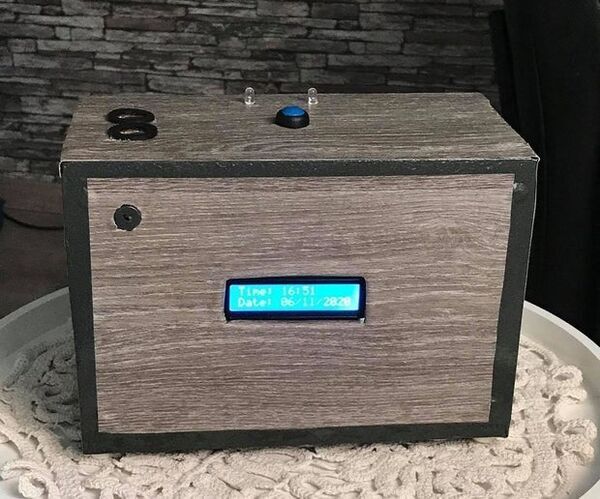
Smart Alarm Clock: a Smart Alarm Clock Made With Raspberry Pi
"Have you ever wanted a smart clock? If so, this is the solution for you! I made Smart Alarm Clock, this is a clock that you can change the alarm time according to the website. When the alarm goes off, there will be a sound (buzzer) and 2 lights will be lit (2 LEDs). The LEDs will only light up when it's dark (light sensor). The LEDs ensure that the room is brightened up so that you can stand up naturally." [...]

DIY USB Type-C Power Delivery Trigger Board
"In this video we will have a closer look at a USB Type-C Power Delivery Trigger board. Such boards are used to output 5V, 9V, 12V, 15V or even 20V from a Power Delivery compatible power source. So I will be showing you how such a commercial board works and I will try to create my own DIY version of it in order to see whether it makes sense to DIY such a board or whether we should stick to the commercial solution instead. Let's get started! " [...]

Boat Ventilator Control
"Controlling a fan in my boat on the cheap; with an ATTiny85 (DigiSpark) and a DHT11 temperature and humidity sensor A Small controller based on a Digispark ATTiny controller I had on my shelf and a spare DHT11 combined temperature and humidity sensor. The controller turns a vent fan On and Off (and several speeds in between) depending on the temperature, humidity, user input and battery voltage. Temperature/Humidity Fan controller for my boat; incorporates a voltage sensor so that it can reduce power when the battery is low on energy, and a button so I can trigger a quiet mode. DigiSpark Based ATtiny85, plenty powerful enough for this application, and with a robust toolchain. It has 6 IO pins & very little extra cruft Has a onboard 5v regulator, I can supply it with the battery voltage, and I can power the DHT11 from the 5v line Somewhat tricky to flash/develop for, Lack of a uart is a total pain during debug since BitBang serial emulators eat half the memory+ DHT11 Temperature and Humidity sensor Not ideal, something more accurate would be preferred, but this is what I have. A DHT22 would be an easy and sensible upgrade Variable speed PWM fan control is provided via a high-current logic-level NPN mosfet Battery voltage sensor protects the battery by allowing powersave and shutdown features A button for the user; Since I will be sleeping 50cm from the fan I want to allow on/off/quiet overrides" [...]
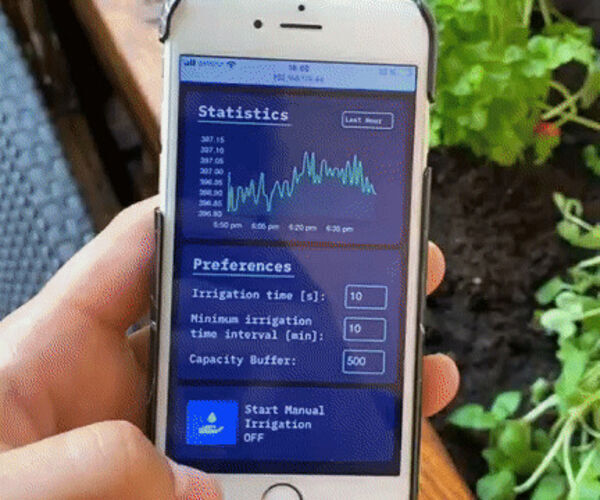
How to Build an Automated DIY Irrigation System With App
"In this article I will show you how to build an affordable automated irrigation system so you no longer have to water your plants by hand. The system can be used for house plants, raised beds, but also for plants in the garden or larger green areas, because the number of connected plants is scalable. Here, the decision as to when to irrigate is not made according to a timer, but rather the soil moisture is measured directly and a decision is made on the basis of this whether irrigation is necessary or not. The system has the following features, which can be controlled via the web app: Monitor and display time series data at the minute, hour, day, week and month levels Setting the water level from which automatic watering should be triggered Setting how long the pump works during an irrigation Manual activation of irrigation with a button Switching between different sensor profiles Switching between dark and light theme" [...]

Big Arduino LCD Clock With Two Alarms and Temperature Monitor Controlled by IR TV Remote
"How to build an Arduino based LCD Clock with Two alarms and temperature monitor controlled by IR TV remote. This is an LCD clock made with DS3231 real time clock module, which unlike DS1307 has the possibility of Alarm and temperature monitor. In this case, the LCD screen displays the date, time, two alarms and also the current temperature. And the most interesting part is that the complete settings of the clock as well as muting the alarm is done through the TV remote controller. " [...]
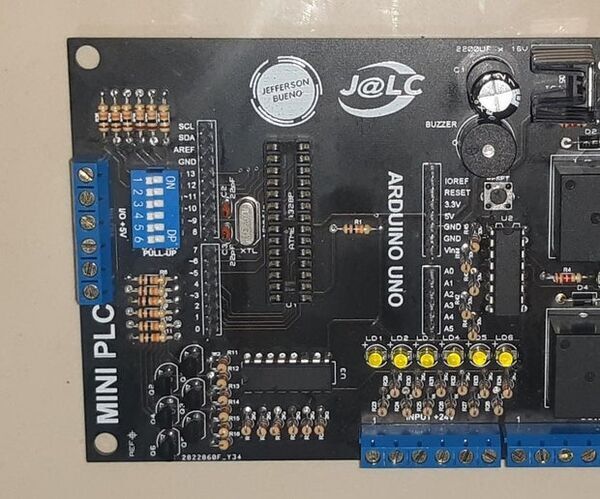
Mini PLC
"The Mini PLC card consists of a card developed by the Jefferson Bueno Channel on YouTube and allows you to use learning in low cost programming in relation to PLC commercials. The aim is to create an open software and open hardware product with commercial components of easy access. A very practical and didactic circuit that can be used for learning or even in a final project. Jefferson Bueno Channel Supplies:Componet List Mini PLC Resistors (1/4W) - 13 resistors 10K ohms - 27 resistors 2k2 ohms - 6 resistors 1k ohms Capacitors - 2 capacitors ceramic 22pF - 1 capacitors ceramic 100nF - 1 eletroltic capacitor 2200uF x 16V Transistors - 6 transistors BC557 (PNP) - 6 transistors BC547 (NPN) Diode and LEDs - 5 diodes 1N4007 - 6 difuse leds yellow 3mm - 4 difuse leds green 3mm Crystal - 1 crystal 16MHZ ICs - 1 IC ULN2003APG - 1 IC 7805 Switches - 1 DIP Switch 6 way - Tactile Button 6x6x4,2 2T Others - 1 Socket 28 pins Slin - 4 Relays 24VCC 5 pins - 2 Terminal Block 5mm / 6 way - 1 Terminal Block 5mm / 8 way - 1 Terminal Block 5mm / 2 way - 1 Terminal pins witch 40 pins - 1 Buzzer 5VCC" [...]
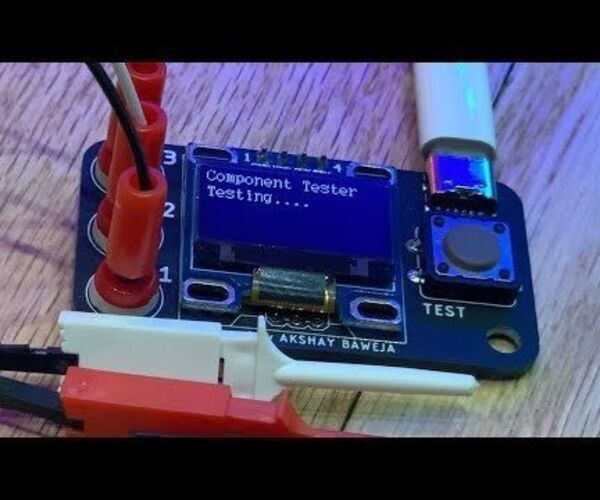
Component Tester in a Keychain
"Being an electronics engineer, I always wanted to have a portable component tester, which could test every electronic component out there. In 2016, I built myself a Component Tester based on AVR TransistorTester by Markus F. and Karl-Heinz Kübbeler. This summer, I thought, can it be made pocket-sized? Since my last version was quite big and difficult to carry around. I started redesigning the PCB with SMD components and an OLED display since it is small, lightweight, and consumes less power. I wanted to retain banana jacks since they offer testing device a robust look and makes it more compatible." [...]

How to Build a Battebot With Cardboard and Arduino
"I created battlebots using the Arduino UNO and cardboard was used to build the bodies. I tried to use affordable supplies and gave the kids creative freedom on how to design their battle bots. Battlebot receives commands from the wireless controller using joystick and nRF24L01 2.4GHz wireless module. " [...]

Arduino-Tamagotchi Project (I Am the Tamagotchi)
"I was bored in quarantine and decided to make an Arduino Tamagotchi. Because I hate a lot of animals I choose myself as the Tamagotchi. First I build my console on a breadboard. The wiring is very simple. There are just three buttons, a buzzer and a Nokia 5110 LCD. " [...]

A Tiny Compass With ATtiny85
"This is our first project with ATtiny85; a simple pocket digital compass (in collaboration with J. Arturo Espejel Báez). ATtiny85 is a high performance and low power microcontroller. It has 8 Kbytes of programmable flash memory. Due to this, the challenge in this project was to reduce the size of the program, since the circuit is very simple, thanks to the I2C protocol. Supplies: For the Compass: ATtiny85 HMC5883L Magnetometer SSD1306 I2c 0.96" 128x64 OLED Display Self-locking square button switch 3.7V 300mAh Lipo Li-polymer Battery 3D printed case (2 parts, please find the STL links) For the Charger: Two pieces of PCB; 17x10mm and 13x18mm 3D printed case (2 parts, please find the STL links) Micro USB 5V 1A TP4056 Lithium battery charger module" [...]
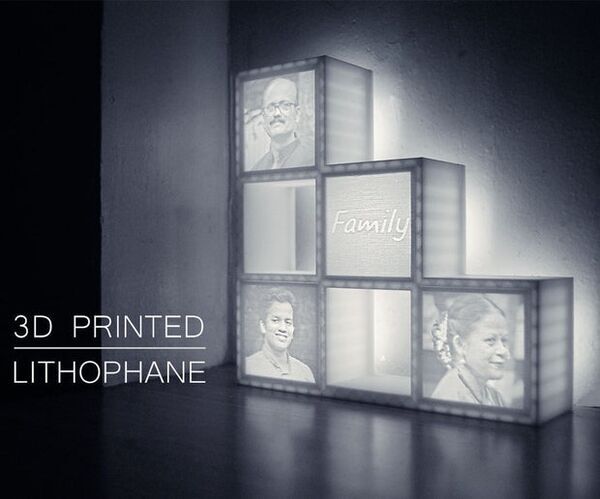
Make a Lithophane Lamp
"Hello, Internet! A few days back I 3D printed my first lithophane which turned out great. It has been a while since I did a 3D printing project. So, I decided to make a lithophane lamp with pictures of my family. It is a simple and straight forward build. And my parents were impressed too!" [...]
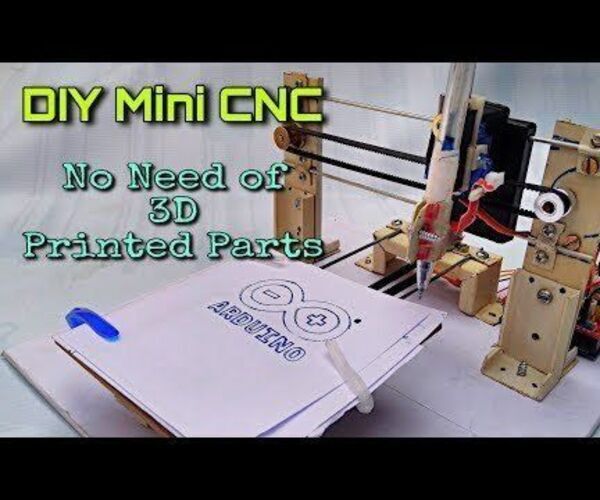
GRBL Based DIY Drawing Machine
"Hello all, I hope you are doing good and safe. I'm here with another very cool project which you can build using some scrap/ used parts. In this Instructables I'm going to show you how you can make a GRBL based mini CNC plotter Machine at home without using any 3D printed parts. by using this CNC plotter machine you can draw logo and can write text also. " [...]

Super Sized Acryllic Spectrum Analyzer
"Why would you want to look at those tiny led displays or those small LCD's if you can do it big? This is a step by step description on how to build your own Giant sized Spectrum analyzer. Using acrylic tiles and led strips to build a room filling light show using 280+ big sized LED's Why do it small if you can do it big..... Supplies: You will need an arduino Mega, a cheap frequency board SI5351 and a handfull of small parts. Let's get started" [...]
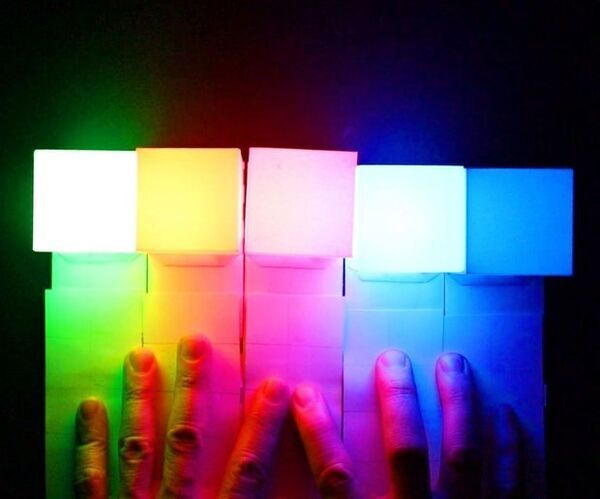
Touch Sensitive RGB Light Made From Paper
"Intro: As a former game designer, I know that kids love to play and interact with technology. Usually, creating interactivity needs programming or complex circuits. To get interactive fun easy, I created this simple and modular RGB Touchcube. It's a great educational project for kids to explore touch-sensitive paper circuits and RGB LEDs. Combine multiple Touchcubes and you can even play cool games with it. Supplies: an RGB LED a three volt button cell (i use CR2032) conductive tape with conductive adhesive Velostat (optional) (Digikey link) a binder clip the printed template scissors glue and/or transparent tape some vegtable oil (optional) cutter knife (optional)" [...]
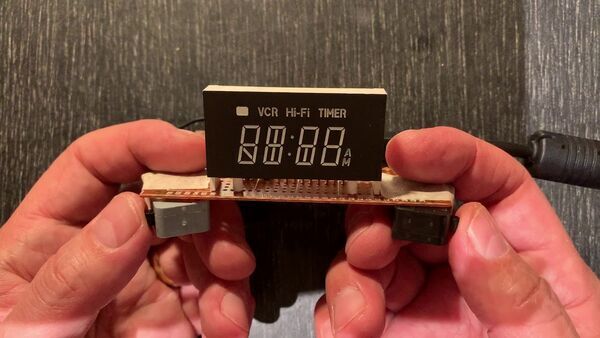
Salvaged LED Display Microgame
"Good news! I just found a discarded VCR with an LED display. That means it's time to salvage the display and make a project out of it. There is lots of info out there on standard 7-segment displays, but appliance and electronics displays are custom, and this one actually turns out to be 10-segment with non-numerical segments. So it will be an exercise in figuring out how a non-standard display works. In this Instructable I will go over my process for hacking a display like this." [...]
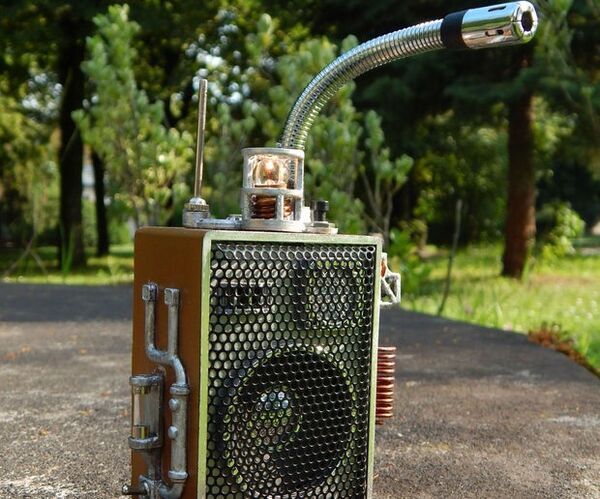
Voicetron - Voice Recording Toy
"This device was created for pleasure and inspiration for anyone who would like to make a simple voice recorder for their children to play, or as a decoration, or use in Geocaching or in escape rooms. There are many possibilities. So let's get to it. Let's start with the toy concept. The device must include a microphone, loudspeaker, recording module, a switch and control buttons, and some decorative elements. All in a battery-powered box." [...]

SSR Latching Circuit With Push Buttons
"Im planning to add some power tools to the underside of my workbench so I can make a table router for example. The tools will mount from the underside on some sort of a removable plate so they can be interchangeable. If you are interested to see how I built this workbench I have a separate Instructable for it. Before starting any work on the workbench for the tool mounts I wanted to figure out a way how I can easily turn on and off all of the power tools attached to it as the tool power switches will be under the table. The easiest solution for it is to mount a power strip on the bench and have its switch exposed so it can be pressed. However, I dont think that this is a safe option as the cables will also be exposed and I could accidentally turn on the switch." [...]

AVRgpp ISP and UPDI programmer
"The AVRgpp (General Purpose Programmer) is open source hardware and software designed for use with the Arduino IDE. It provides the following functions in a single unit: an ISP programmer, a UPDI programmer (with or without a 12V programming pulse), a USB to serial interface. Functions are selected via a 128x32 I2C OLED LCD and two buttons. The left button selects functions, the right button selects options. AVRgpp can optionally provide power (5V or 3.3V) to the target system - within the limits of USB power. With the supplied firmware AVRgpp supports programming but not JTAG debugging." [...]
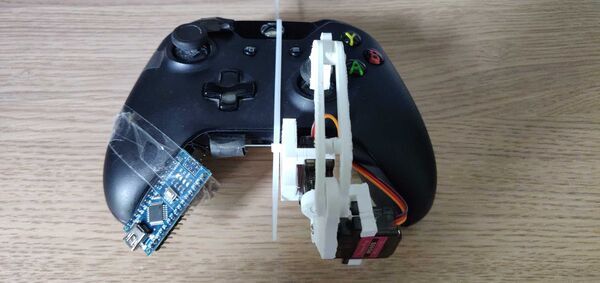
Autonomously Landing a Lunar Lander with an Xbox Controller Robotic Arm - Part 1
"Creating an Xbox Robot Arm is something that I’ve been wanting to do ever since I saw the post by Kevin Drouglazet who was able to utilize an Xbox Controller with an arm he created and was so friendly to publish the design files for (I am definitely not a hardware designer 😅) - thanks for that Kevin! Another reason why I wanted to do this is to have more practical knowledge and hands-on experience in the Reinforcement Learning domain. Since with this Robot Arm, I saw the potential to learn physical action control which will translate in world changes that can be virtual, opening up the realm of possibilities for use cases. To make this post more understandable, I decided to do an in-depth coverage over multiple articles. In the first part I will detail how this Robotic Arm extension was built and how you can make the robot arm control the right tuhmbstick when you are moving with the left thumbstick. While in the second part, I will go deeper on how we are then able to utilize a Unity Environment and train it to eventually be controlled by the robotic arm." [...]

Light Up Face Mask with Bluetooth
"Protect yourself and others from coronavirus in public places, AND look amazing with custom animations on your mask! Since the beginning of the COVID-19 pandemic, cool face masks have shown up all over the internet. I started sewing face masks with my little machine, and saw a few light-up face masks show up across my social feed from time to time. I decided it was time to make my own. I was excited to try out the Adafruit Feather with Bluefruit LE. It is lightweight and I thought it could tuck inside a face mask just perfectly." [...]
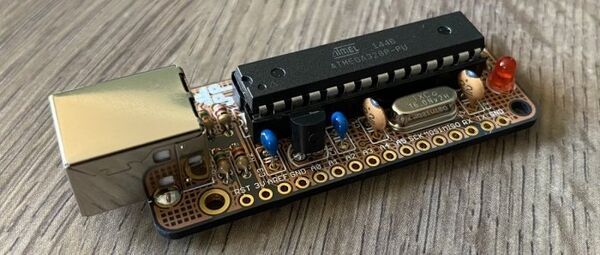
THT feather with ATMEGA8
"V-USB and low component count, all through-hole technology I had this edgy idea to make a chunky old school Arduino thing that fits the feather form factor. USB-B port and a 3V regulator make this compatible with most featherwings, there's even the built_in LED on PIN 13 to get your blinkies starting. Can be upgraded to the Atmega328P of course, but the main goal was to have an Atmega8 DIP feather, mostly to trigger people, but the idea grew on me. Also: everyone probably has a DIP Atmega8 laying around somewhere, doing nothing - this board will give it something to do. " [...]

1979 Merlin Pi High Quality Camera
"This broken old Merlin handheld game is now a tactile, practical case for a Raspberry Pi High Quality camera. The interchangeable camera lens peeps out from what was the battery cover on the rear, and on the front, the matrix of buttons has been replaced by a HyperPixel four inch capacitive touchscreen. Still, video, timelapse and slow motion modes are all available on the colourful touch menu, as well as the option to bulk-upload the captured photo and video files to Dropbox. Additional touches include a handy tripod mount in Merlin's base, and hardware buttons to manually capture images and video. Supplies: 1979 Merlin Handheld Game Raspberry Pi 3 HyperPixel 4" Touchscreen Raspberry Pi HQ Camera & Lens Push Buttons Jumper Cables" [...]
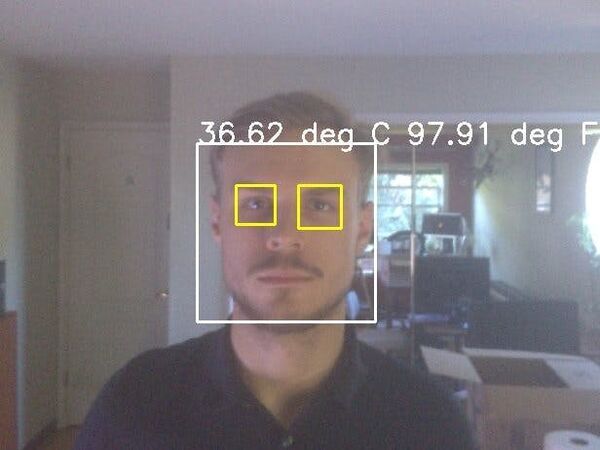
AI Thermometer
"AI device for mass fever screening. Hi Everyone! I want to share with you an AI Fever Screening Thermometer, a device I've been working on during past two months. I combine Thermal (IR) and Visible Spectrum (RGB) cameras in order to: Detect people in the scene Measure their skin temperature in a contactless manner based on the thermal camera input. Most importantly: The device automatically detects people in the scene - there's no need for a human operator! You can test multiple people at the time." [...]

LCD Alarm Clock with many faces
"An LCD1602 alarm clock that includes many of the other LCD1602 clocks found on maker sites. Looking around for something to build, I decided on a LCD 1602 clock. After perusing the Web and finding many different implementations, I decided why not make one clock that incorporates all of them. Clock Features Six different display styles Set time, date and alarm Mercury switch to switch off alarm Backlight control" [...]

Time Cuboid
"I find myself, like many of us, sitting at my desk a lot. I sit there for work. I sit there again for the many video and/or voice socials that have been set up. I sit there to play games or watch films. I even clear off the computer stuff and sit there to solder and work on projects. I am, in fact, sitting there now as I write this." [...]
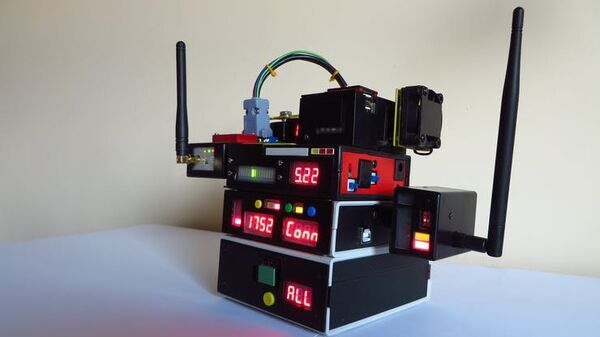
Voice Controlled Arduino Smart Home - Without Wires
"Just say the needed temperature, control your home with voice or Android! Two units on synched Bluetooth link, RFID functions... A full home automation Arduino project with voice control - without wires. I designed, built and programmed it in my style, following only my own fantasy. Every each parts are handmade. Introdution The system controls the heater gas boiler, the lights in the flat, the airing fan and my media player. There are two autonomous Arduino-based units communicating on a synchronized Bluetooth link." [...]
That's all Folks!



